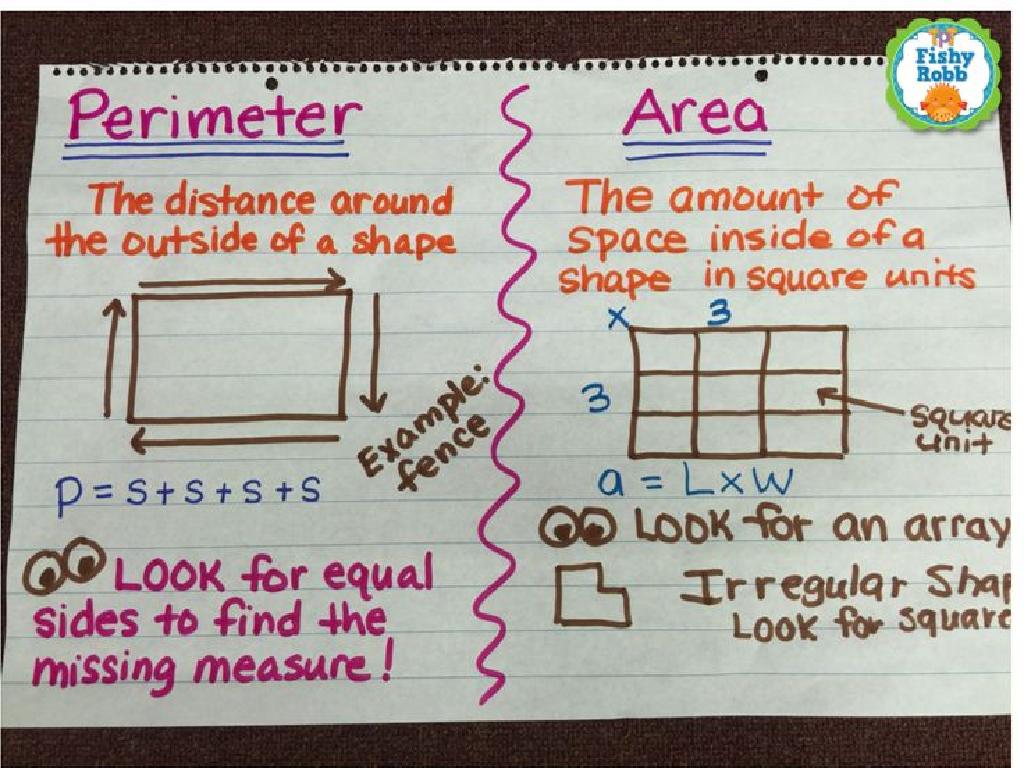Match Digital Clocks And Times
Subject: Math
Grade: First grade
Topic: Time
Please LOG IN to download the presentation. Access is available to registered users only.
View More Content
Welcome to Telling Time!
– Greet the day with ‘Good morning!’
– Today’s lesson: clocks and time
– Understanding time is important
– Time helps us organize the day
– It tells us when to do activities
– Like knowing when to eat or play
|
This slide is designed to introduce first graders to the concept of time. Start the class with a cheerful greeting to set a positive tone. Explain that the day’s lesson will focus on understanding clocks and how to read time. Emphasize the importance of time in daily life, such as knowing when to wake up, go to school, have meals, and play. Use simple language and relatable examples to make the concept clear. Encourage the children to think of activities they do at specific times to make the lesson more interactive and engaging.
Understanding Time
– Time and events
– Time lets us know when things happen, like school or meals.
– Time helps us plan
– We use clocks to schedule our day, like bedtime or playtime.
– Parts of the day
– Morning is for breakfast, afternoon for lunch, and night for dinner.
|
This slide introduces the concept of time to first graders. Begin by explaining that time is a way to measure when events happen, such as going to school or eating dinner. Emphasize the importance of time in organizing our daily activities, like knowing when to wake up or when to go to bed. Discuss the different parts of the day morning, afternoon, and night and what activities might happen during these times. Use examples that are relevant to the students’ routines to help them connect with the concept of time. Encourage students to think of their own examples of events that happen at specific times during the day.
Learning About Clocks
– Different ways to show time
– Digital clocks use numbers
– Example: 7:00 means seven o’clock
– Analog clocks have moving hands
– The big hand and little hand point to the hours and minutes
– Practice matching times
– We’ll match digital times to analog clock faces
|
This slide introduces the concept of time and the two main types of clocks: digital and analog. Emphasize to the students that time can be displayed in different ways but it tells the same thing. Digital clocks are straightforward and show time with numbers, making it easier for beginners to understand. Analog clocks, on the other hand, require understanding the position of the hour and minute hands. Encourage students to practice by matching digital times to the correct positions of the hands on an analog clock. Activities can include drawing hands on a clock face to match a digital time, or identifying the digital time when given an analog clock face. This will help them become comfortable with reading both types of clocks.
Learning About Digital Clocks
– Digital clocks use numbers
– They display hours and minutes
– Examining digital clock examples
– We’ll look at clocks to see different times
– Understanding time with digital clocks
– Learn to read time like ‘2:30’ means 2 hours and 30 minutes
|
This slide introduces students to digital clocks and how they represent time using numbers. Start by explaining that unlike analog clocks, digital clocks use digits to show the time. Highlight that digital clocks display two numbers: the first for hours and the second for minutes. Use visual examples of digital clocks showing different times to help students recognize patterns in the numbers. Encourage students to practice reading times aloud from digital clocks. Activities can include matching digital clock times to daily activities, such as lunchtime or bedtime, to make the concept more relatable.
Matching Digital Times to Daily Activities
– Times link to daily events
– 7:00 AM is wake-up time
– The time we get out of bed
– 12:00 PM means lunchtime
– When we eat our midday meal
– Match times with your routine
|
This slide is aimed at helping first graders understand the concept of time by relating digital times to common daily activities. By associating specific times with routine events, such as waking up and having lunch, students can begin to grasp the practical application of reading digital clocks. Encourage the students to think about what they usually do at these times and to match other important times of their day with activities they perform. This will help them to understand the concept of time in a fun and relatable way. For an engaging class activity, you could ask students to draw a picture of what they do at these times or to create a simple daily schedule using digital times.
Practice Time: Setting Digital Clocks
– Learn to set a digital clock
– I’ll show you a time
– Example: If I show 3:00, you set 3:00
– Match it on your clock
– Use your toy clock to practice
– Ready? Let’s start!
|
This slide is for an interactive class activity where students will practice setting the time on digital clocks. Begin by explaining how to read and set the time on a digital clock. Show a time on the board, such as 2:15, and have the students use their toy clocks to match the time shown. Walk around the classroom to assist and check on students’ progress. Offer encouragement and correct mistakes gently. Prepare to show a variety of times, including o’clock, half past, quarter past, and quarter to the hour. This hands-on activity will help reinforce their ability to read and set times on digital clocks.
Class Activity: Clock Match Game
– Let’s play a matching game!
– Match digital time with clocks
– Look at the numbers and match with clock hands
– Work in teams to find matches
– Discuss with your teammates to agree on the correct clock
– Have fun learning about time!
|
This interactive game is designed to help first graders understand the concept of time by matching digital times to analog clocks. Divide the class into small groups and provide each group with sets of digital time cards and pictures of analog clocks. Encourage teamwork as they discuss and match the times together. This activity will not only reinforce their ability to read both digital and analog clocks but also promote collaborative learning. Possible variations of the activity could include matching specific times to daily activities, a relay race to find the correct clock, or even creating their own clocks with movable hands to match to digital times.
Time Review and Questions
– Recap today’s lesson on time
– Recognize 3:00 on a digital clock
– Example: 3:00 is when school ends
– Discuss our bedtime routines
– Share what time you sleep at night
– Q&A session about time
|
This slide aims to review what the students have learned about telling time on digital clocks. Start by asking the class to summarize the day’s lesson to reinforce their understanding. Then, move on to a practical exercise by showing them a digital clock and asking them to identify when it reads 3:00, relating it to a common event like the end of the school day. Encourage students to talk about their bedtime, helping them connect the concept of time with their daily routine. Conclude with a Q&A session to address any uncertainties and ensure comprehension. This interactive approach helps solidify the day’s learning and makes the concept of time relatable to their everyday lives.
Time Mastery: Digital Clocks
– Congratulations on learning digital clocks!
– Now match time with daily activities
– Example: 7:00 AM is breakfast time
– Keep practicing telling time
– Practice makes perfect
– The more you practice, the better you’ll get!
|
This slide is a celebratory conclusion to the lesson on digital clocks. It’s meant to reinforce the students’ new ability to tell time and encourage them to apply this skill to their daily routines. Highlight the importance of practice in mastering the skill of telling time. Remind them to look at digital clocks throughout their day and try to match the time with activities they are doing, like eating breakfast at 7:00 AM or going to bed at 8:00 PM. Encourage them to practice telling time with their family and friends to become more confident.






